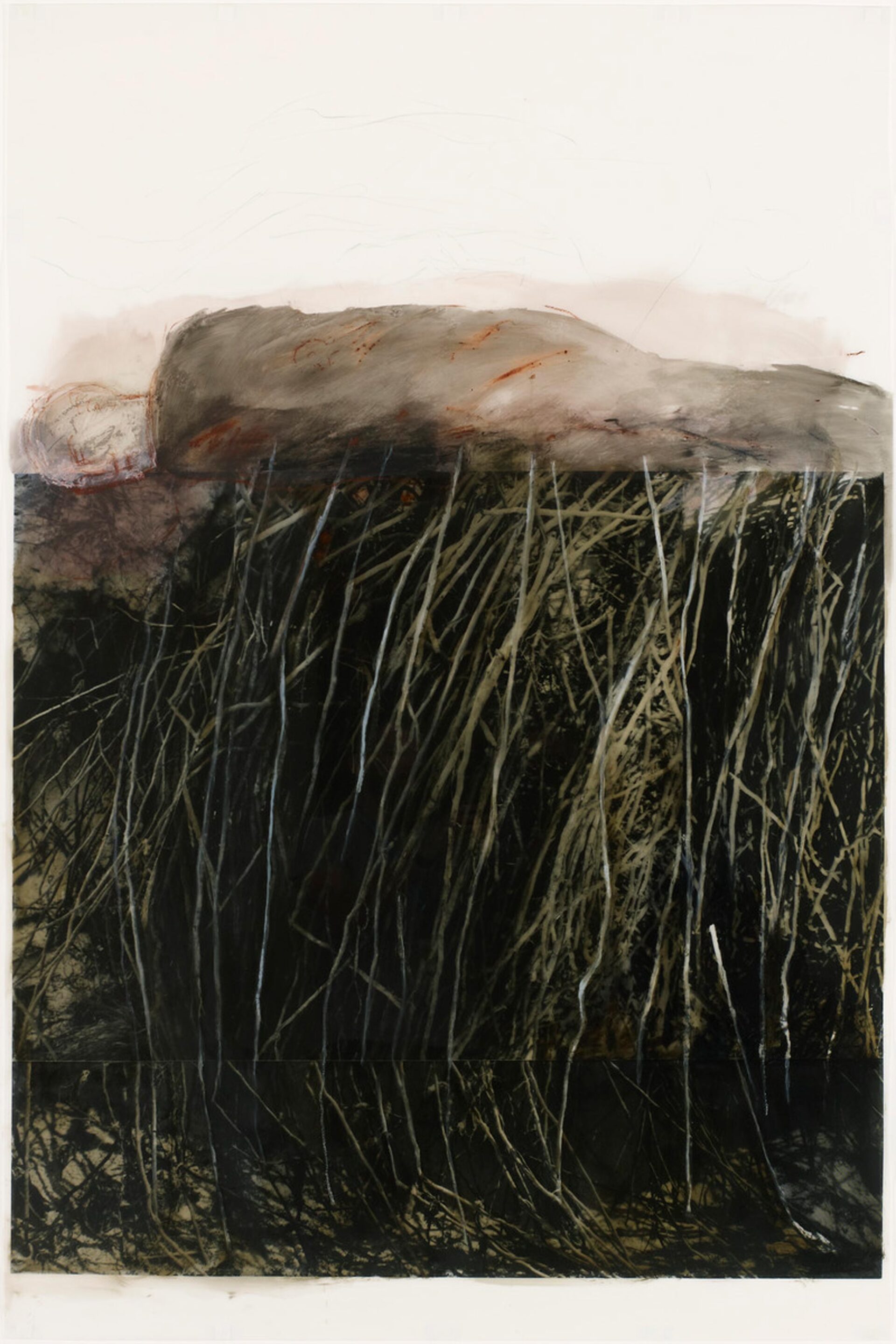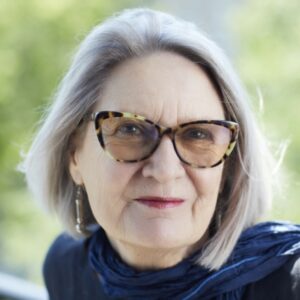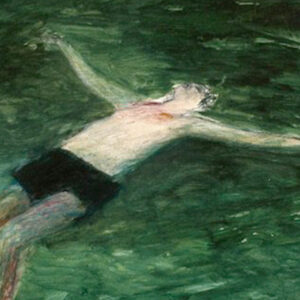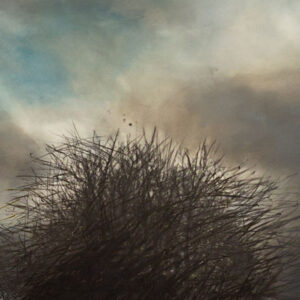Untitled (Nerves, No. 1) 1993

Betty Goodwin, Untitled (Nerves, No. 1), 1993
Oil, pastel, tar, and wax over Cronaflex print on Mylar, 196.3 x 134.5 cm
Art Gallery of Ontario, Toronto
This work originated in snapshots of a dense mass of roots taken by Betty Goodwin in 1992 during a holiday in the Dominican Republic. “I was somewhere where the ocean had pushed back the land to such an extent that it created a small cliff,” she told Robert Enright. “On top of the cliff there was a forest. As the trees got very close to the edge you could see all the roots coming down. That’s where the nerves came from. I liked the image. I blew it up and worked from there. I claimed it for what I needed.”
-
Betty Goodwin, Untitled (Nerves), No. 5, 1993
Oil pastel, tar, wax, and Cronaflex print on translucent Mylar film, 131.6 x 196 cm
Musée d’art contemporain de Montréal
-
Betty Goodwin, Nerves, No. 10, 1993
Oil pastel, tar, and wax on chromogenic print, 221.5 x 171.5 cm
Montreal Museum of Fine Arts
-
Betty Goodwin, Passing Through, from the series Nerves, 1994
Etching on Japanese paper, 80.2 x 60.6 cm
Art Gallery of Ontario, Toronto
A cropped version of that photograph provides the preliminary trace from which she extrapolated several similar works in her Nerves series, 1993–95. In these, the dense root system is transformed by Goodwin into an analogy for the body’s subcutaneous network of nerve tissues, a symbol of its life energy. Using her signature earthy red colour and in some works adding metal elements as she began to see the dense system of nerves also as life-giving arteries, Goodwin gave form simultaneously to the living matter of the body and its final destiny in the earth. Drawing over the cropped photograph, she places a figure in repose along a dividing line, which defines above and below ground, but also two realms—that of the physical body and its internal energy, and that of the body as locus of experience and memory. The figure appears to both sink into the earth and be nurtured by it in an exchange.
As she had done for decades, Goodwin collected images, objects, and phrases from texts that often found their way into her art years later, as in Untitled (Nerves, No. 1). These were a source of inspiration, even provocation, and sometimes became actual material in her work. Goodwin had by the 1990s frequently incorporated enlarged photographs printed on Mylar as a preliminary ground for her drawings. In this respect, she was continuing her practice of responding to existing traces. However, she was also using a different method in a transformative process that resulted in a new image.
Continuing to combine photography and drawing in this phase of her work, Goodwin again demonstrated the openness with which she identified materials that would best suit her conception of the body as both the site of our vulnerable corporeality and as the locus of existential states. For the first time in her work, with Untitled (Nerves, No. 1), the body is at rest, neither struggling to maintain verticality or flotation, disappearing in spectral frailty, or cowering in painful self-defence, but rather simply released to a cycle of life and death.

 About the Author
About the Author
 More Online Art Books
More Online Art Books
 Acknowledgements
Acknowledgements